Common Grounds: Thinking With Ruderal Plants About Other (Filmic) Histories
Abstract
1. Introduction: Beyond Representation Alone
2. Our Ruderal Condition
3. Common Grounds: On the Affective Ecologies Binding Humans, Ruderals and the Camera
If we speak of pleasure as a physical experience, filming plants and soil—in macro with no tripod—requires a lot of physical concentration and guessing. You are moving the camera, trying to follow the curve of a leaf or a soil particle, which induces an extremely strange state of the body. It’s like you are maintaining a sense of touch on the verge of the sensible [26] 41.
Affective encounters beyond the lived, and outside the human with machines, earth strata, light, lichens, soil, bacteria, plants, animals and their symbiotic endeavors, heterogeneous micro- and macro-perceptions and temporalities might potentially help us to learn inhuman interspecies modes of care and attention and enable us to confront the limits of the very concept of the human [29].
Funding
Institutional Review Board Statement
Data Availability Statement
Acknowledgments
Conflicts of Interest
| 1 | As told by Louis Lumière to the film historian Georges Sadoul. See Georges Sadoul, Lumière et Méliès, Paris: Lherminier, 1985, p. 94. |
| 2 | A couple of months after the Grand Café projection, the accidental reverse screening of Démolition d’un mur (“Demolition of a wall”, Louis Lumière, view nº 40.1, 1896) introduced a specifically machinic (and therefore non-human) time experience to the Lumière catalogue. |
| 3 | Among others, see Michel Cordat, “Correspondance. La croissance d’une rose au cinéma”, La Nature, 1896, nº 1219, p. 304. |
| 4 | Founded in 1899, the Institut Marey was also to use time-lapse in order to record the unfolding of botanical living processes, as explored by Oliver Gaycken in his essay on visualising plant motion between 1880–1903 [3]. In addition to Hannah Landecker’s discussion of time-lapse techniques in early 20th century film in her article “Microcinematography and the History of Science and Film” (Isis 97, no. 1, 2006, pp. 121–132), the use of that particular technique in order to explore vegetal living processes has been discussed in recent studies, among which Caroline Hovanec’s “Another Nature Speaks to the Camera: Natural History and Film Theory” (Modernism/modernity, vol. 26, nº 2, April 2019, pp. 243–265), Max Long’s, “The ciné-biologists: natural history film and the co-production of knowledge in interwar Britain” [4] and Colin Williamson’s “The Garden in the Laboratory: Arthur C. Pillsbury’s Time-Lapse Films and the American Conservation Movement” (Philosophies, 2022, 7, nº 5: 118. https://doi.org/10.3390/philosophies7050118). See also the collective book Puissance du végétal et cinéma animiste. La vitalité révélée par la technique (Teresa Castro, Perig Pitrou and Marie Rebecchi, eds., Dijon: presses du réel, 2022). |
| 5 | On this topic, and in addition to the already-quoted Oliver Gaycken article [3], see also Teresa Castro, “The Mediated Plant”, e-flux, nº 102, September 2019. Available online: https://www.e-flux.com/journal/102/283819/the-mediated-plant/ (accessed on 14 November 2022). |
| 6 | Produced by British Instructional Films, the extremely popular series Secrets of Nature released 144 documentaries between 1922 and 1933: out of these, 39 films focused on the plants. On Secrets of Nature, see, among others, Max Long, “The ciné-biologists: natural history film and the co-production of knowledge in interwar Britain” [4]. |
| 7 | In their book Secrets of Nature (1939), filmmakers Mary Field and F. Percy Smith dedicate a few, amusing pages to the topic of “plants as film stars” (p. 147). They write: “A plant makes up its own mind—or whatever Nature has given it in place of a mind—as to the programme it intends to carry out; and unless one has already sufficient experience of its habits to know exactly what to expect, the working-out of a detailed script is useless, as the plant will be no more likely to follow it than it will to conform to the percepts of textbooks”; and they conclude, “plants, unlike humans and animals, can be neither bribed nor bullied, coaxed nor cajoled. Unduly generous treatment is useless, and over-fertilization may injure or even kill the plant. Our wisest plan is to allow the plant to tell its story in its own way, while optically accelerating its slow and dignified progress to conform with the requirements of the age of speed” (p. 148). See Mary Field and F. Percy Smith, Secrets of Nature. London: The Scientific Book Club, 1939. |
| 8 | Recent and thought-provoking literature has often focused on the representation of plants on screen, in particular in horror films (but not only). See Dawn Keetley and Angela Tenga (eds.), Plant Horror. Approaches to the Monstrous Vegetal in Fiction and Film (London: Palgrave MacMillan, 2016, p. 145–162); Andrew Howe, “Monstrous Flora: Cinematic Plant Antagonists of the Post-World War II Era” (in Patrícia Vieira and Monica Gagliano, eds., The Green Thread: Dialogues with the Vegetal World, Lanham: Lexington Books, 2016, p. 147–163) and Marc Olivier, “Houseplant”, Household of Horror. Cinematic Fear and the Secret Life of Everyday Objects (Bloomington: Indiana University Press, 2020, pp. 154–179). |
| 9 | Known as an inexpensive imitator of ivory, horn and tortoise shell, celluloid became a popular material in the second-half of the 19th century. Celluloid goods flooded the markets and accidents were not infrequent (celluloid combs, for instance, were known to explode and to injury their owners). |
| 10 | The “gardener”and its blossoming gardens are a recurrent character in Godard’s films from the late 1980s onwards. Among others, see Nouvelle Vague (“New Wave”, 1990), Hélas pour moi (“Alas for me”, 1993) and Notre Musique (“Our Music”, 2004). |
| 11 | Esther Leslie’s Synthetic Worlds. Nature, Art and the Chemical Industry (London: Reaktion Books, 2005) provides a thorough and fascinating introduction to this point. |
| 12 | According to Paolo Cherchi Usai, the Chronochrome filters (as well as the filters employed by George Albert Smith’s and Charles Urban’s Kinemacolor, another successful additive process used between 1908–1915) absorbed so much light that they required “250 per cent more electric power to achieve a luminosity equivalent to that of a conventional projector”. See Paolo Cherchi Usai, Silent Cinema: An Introduction, London: BFI, 2000, p. 30. |
| 13 | On this topic, and in addition to Bozak, Pick and Narraway [9,10], see also Teresa Castro, “L’ontologie fossile. Pellicule et impensé environnemental du cinéma(tographe), Écocritiques. Cinéma, audiovisuel, arts. Cahier Textuel, Gaspard Delon, Aymeric Pantet and Charles Hewinson, eds., Paris: Hermann, in press. |
| 14 | Significantly, if the word “ruderal” was for long only used by botanists, French geographer Jean Gouhier founded the science of rudology—the systematic study of waste—in 1972. Today, being a rudologue (a “rudologist”) is a recognised occupation, “rudologists” specialising in the management of waste and in the prevention of environmental hazards. See the fiche “rudologue” made by the French Centre d’information et documentation jeunesse. Available online: https://www.cidj.com/metiers/rudologue (accessed on 14 November 2022). |
| 15 | The word symbiosis (from the Greek symbíōsis, “living together”) now refers to any type of a close and long-term biological interaction between two different biological organisms, be it mutualistic, commensalistic, or parasitic. The term was subject to a century-long debate about whether it should specifically denote mutualism, as in lichens. It’s in this latter sense that I’m using it. |
| 16 | Linnaean nomenclature identifies sixteen different types of soils: lacustre (near lakes), palustre (swampy), nemorōsōrum (wooded), pratense (of a meadow), littorale (littoral), campestrium (rural), etc. |
| 17 | If there is a difference between the ammonium nitrate used in fertilisers and the cellulose nitrate used by the motion picture industry, connections can be drawn between the two, as pointed out by Anaïs Farine in “Archives nitrates. Représentation, pollution, explosion: sur la piste des effets sauterelles”, Trouble dans les collections, nº 2, September 2021. Available online: https://troublesdanslescollections.fr/2021/07/26/article-9/ (accessed on 14 November 2022). |
| 18 | In 1643, Domenico Panaroli had already observed the presence of many exotic species in the Colosseum, in his Plantarum Amphytheatralium Catalogus, probably one of the first studies of ruderal botany ever published. On the animal hypothesis, see Paul Cooper, “Rome’s Colosseum Was Once a Wild, Tangled Garden”, The Atlantic, 5 December 2017. Available online: https://www.theatlantic.com/science/archive/2017/12/romes-colosseum-garden/547535/ (accessed on 14 November 2022). |
| 19 | The ideological connotations behind the terminology used by botanists, biologists and ecologists with relation to nonindigenous plant species has regularly been criticised, including by ecologists themselves. Among others, see Robert I. Colautti, “A neutral terminology to define invasive species”, Diversity and Distributions. A Journal of Conservation Biogeography, vol 10, issue 2, march 2004, pp. 135–141, as well as Jacques Tassin and Christian a. Kull, “Devising Other Metaphors for Biological Invasions”, Natures Sciences Sociétés, vol. 20, no. 4, 2012, pp. 404–414. On the specific question of “weeds”, see Lucia Argüelles and Hugh March, “Weeds in action: Vegetal Political Ecology of Unwanted Plants”, Progress in Human Geography, vol. 46, issue 1, December 2021, pp. 44–66. On a different note, Richard Mabey also provides a thorough cultural critique of the discourse on weeds on his book on “nature’s most unloved plants” [1]. See also his remarkable The Unofficial Countryside (London: Collins, 1973), a personal mapping of bombed sites, car parks, city docks, etc., published in 1973. |
| 20 | See https://adminplants.sc.egov.usda.gov/java/profile?symbol=ASFI2 (accessed on 14 November 2022). |
| 21 | The hygienist urges of urban managers, who tended to consider lichens unsightly, ignored botanical knowledge: lichens were known to constitute indicator of the air’s salubrité (healthiness) since at least 1866. See William Nylander, “Les lichens du Jardin du Luxembourg”, Bulletin de la Société Botanique de France, 13:7, pp 364-371, DOI: https://doi.org/10.1080/00378941.1866.10827433. |
| 22 | In relation to ruderals and “weeds” as “vagabonds”, see Éloge des vagabondes (“In Praise of Vagabonds”), by French landscape architect Gilles Clément. The book’s introduction and concluding essay have been translated into English by Jonathan Skinner: “In Praise of Vagabonds”, Qui Parle, Spring/Summer 2011, vol. 19, nº2, pp. 275–297. |
| 23 | Jocelyn Saab’s Beirut trilogy not only provides a striking portrait of Civil War Beirut as it documents a city progressively turned into rubble and speckled with ruderal plants. In Beyrouth, ma ville (“Beirut My City”, 1982) a short-sequence focuses on an old-man who cultivates plants in a tree bed and continues to take care of them during an aerial bombing. |
| 24 | As episodes of great environmental disturbance, wars have also coincided with the involuntary introduction of new vegetal species. Spores and seeds present in horse forages, or concealed in clothes, shoes and vehicles, were often responsible for this. In 1871 (after the siege of Paris during the Franco-Prussian war), two French botanists published a study on such obsidional species (from the Latin obsidionalis, of/connected to a siege/blockade). Their Florula Obsidionalis lists an impressive number of species brought by German troops. In France, many species are known to have been introduced in Lorraine during the World War I. See François Vernier, Plantes obsidionales. L’étonnante histoire des espèces propagées par les armées, Strasbourg: Vent d’Est, 2014. |
| 25 | See Bettina Stoetzer, “Ruderal Ecologies: Rethinking Nature, Migration, and the Urban Landscape in Berlin” [17], as well as Matthew Gandy’s essential book, Natura Urbana. Ecological Constellations in Urban Space (Cambridge, Massachusetts: MIT Press, 2022). Stoetzer also mentions the fact that many ruderal species found in postwar Berlin were introduced by soldiers and migrants during World War II. |
| 26 | Originally from the Mediterranean, sticky goosefoot is often mentioned as one of the species that thrived in Berlin’s ruins. First recorded in the city in 1894, the dry, rocky soils of the postwar period proved to be their “ideal milieu”. |
| 27 | See also Natasha Myers, “From Edenic Apocalypse to Gardens against Eden: Plants and People in and after the Anthropocene”, in Infrastructure, Environment, and Life in the Anthropocene, Kregg Hetherington (ed.), New York, USA: Duke University Press, 2018, pp. 115–148. |
| 28 | L’Aventure des plantes was first released as a 13-episode series in 1982; a second series was aired in 1986. The episode “Des hommes et des plantes” belongs to the second series and can be seen here: https://www.youtube.com/watch?v=surHaGNO4FU (accessed on 14 November 2022). Pelt’s book on L’Homme renaturé (“The Re-Naturalized Human”, 1977) is often mentioned as one of the first studies explicitly focusing on urban ecologies. |
| 29 | On this point, see Bettina Stoetzer’s article, “Ruderal Ecologies” [17]. |
| 30 | The term “undercommons” comes from Fred Motten’s and Stefano Harney’s book The Undercommons. Fugitive Planning and Black Study (Wienhoe, New York, Port Watson: Minor Compositions, 2013). To follow Yves Citton and Jacopo Rasmi, the undercommons evoke the neglected and ill-treated “commons from below”, those upon which the modern “exploitation of human and other-than-human natures” has relied; fugitive, precarious and transgressive commons, refusing the values and norms imposed from above. See Yves Citton et Jacopo Rasmi, “Le Plantationocène dans la perspective des undercommons”, Multitudes, vol. 76, no. 3, 2019, pp. 76–84. |
| 31 | According to Tsing, “first nature” refers to “ecological relations” and “second nature” to “capitalist transformations of the environment” (p. viii, [11]). |
| 32 | On Lois Weinberger and his interest in ruderal plants see, among others, Bergit Arrends and Jessica Ulrich, “Lois Weinberger: Green Man” (interview with Lois Weinberger), Antennae. The Journal of Nature in Visual Culture, 2011 issue 18, pp. 37–48; Philip van Cauteren (ed.), Lois Weinberger (Berlin: Hatje Cantze, 2013) and the already quoted text by Natasha Myers “From Edenic Apocalypse to Gardens against Eden. Plants and People in and after the Anthropocene”, art. cit. |
| 33 | In the already evoked Secrets of Nature series, even the reviled dodder—a rootless, parasitic “weed”, with little to no chlorophyll—deserved an episode of its own: The Strangler (F. Percy Smith, 1931, 11 min). |
| 34 | See, among others, Jeanne Etelain, “The Crisis of Anthropocentric Space. Thinking the Politics of the Zone with Andrei Tarkovsky’s Stalker”, Thinking Space with Cinema and Literature, Ludovic Cortade and Guillaume Soulez, eds., Bern: Peter Lang, 2022, pp. 75–91. |
| 35 | Following Anna Tsing, “To listen and to tell a rush of stories is a method. And why not make the strong claim and call it a science, an addition to knowledge? Its research object is contaminated diversity; its unit of analysis is indeterminate encounter” (p. 37, [11]). |
| 36 | The power plant in question had been blown up by the Red Army in 1941. Tarkovsky had initially intended to film around an old Chinese mine in Tajikistan, but an earthquake rendered the location unusable. |
| 37 | “Working athwart the reductive, mechanistic, and adaptationist logics that grounds ecological sciences, we offer a reading”, write Hustak and Myers, “that amplifies accounts of the creative, improvisational, and fleeting practices through which plants and insects involve themselves in one another’s lives” (p. 77, [24]). |
| 38 | As recalled by Marhöfer, the wild relative of millet that we see in the film is considered a particularly resistant “weed”, “typical for patches of disturbed land” [25]. Likewise, Japanese knotweed (introduced in Europe as a garden shrubbery in the mid 19th century and used as animal fodder in the 20th century) is often described as a virulent “biohazard”. Both species—Panicum ruderale and Fallopia Japonica—are ruderal. |
| 39 | On Marhöfer’s film driven post-doctoral research in Japan, see the artist’s website: https://elkemarhoefer.xyz/projects/disturbed-ecologies/ (accessed on 14 November 2022). As recalled by Anna Tsing (whose work is also about disturbance-based ecologies, questioning the idea of ecology as balanced equilibrium), the aristocracy’s obsession with sugi and hinoki meant that Japanese peasant forests privileged oaks and red pines (pp. 183–187, [11]). |
| 40 | The micro test plates seen in the film were used to evaluate the number of microbes living in three different types of soil [25]. |
| 41 | On the erotic dimension of the film, see Mokoto Mochida, “I is an-other… Eroticism in Marhöfer and Lylov’s film Soil-Habit-Plants”, in Anette Busch and Tobias Hering, eds., Tell it to the Stones. Encounters with the Films of Danièle Huillet and Jean-Marie Straub, London: Sternberg Press, 2021, pp. 404-409. |
| 42 | In line with Gilles Deleuze, who observed that “The visual image, in [Straub-Huillet] is the rock” (Gilles Deleuze, Cinema II: The Time-Image, New York: Bloomsbury Academic, 2013, p. 244), the question of geology comes up regularly in interviews with Jean-Marie Straub. See, among others, Marhöfer’s and Lylov’s conversation with Jean-Marie Straub, “A Thousand Cliffs”, in Anette Busch and Tobias Hering, eds., Tell it to the Stones. Encounters with the Films of Danièle Huillet and Jean-Marie Straub, London: Sternberg Press, 2021, pp. 312–335. |
| 43 | See also, with regards to Shape Shifting and the role of the camera, the conversation between Marhöfer, Lylov and Andrea and Matei Bellu, “Talking in Waves”, in Shape Shifting, Berlin: Archive Books, 2015, pp. 69–72. |
| 44 | An intuition shared by Nida Sinnokrot in “Soils-Habits-Plants. Mikhail Lylov and Elke Marhöfer in conversation with Sahar Qawasmi and Nida Sinnokrot” [26]. |
| 45 | See Lynn Sagan (Margulis), “On the origins of mitosing cells”, Journal of Theoretical Biology, vol. 14, 1967, pp. 265–274. Margulis’ research (initially received with great skepticism by her peers) promotes mutual symbiosis to the status of the engine of evolution, since at the origin of complex cells, called eukaryotes (containing a separate nucleus from the mitochondria and characterizing all plant cells and animals), one finds the fusion or symbiosis with simpler organisms, such as certain archaea and bacteria (single-celled organisms, without nucleus and mitochondria, so-called prokaryotes). Margulis’s hypothesis radically reshaped the narrative around evolution. |
| 46 | On Becoming Extinct (Wild Grass) and subjectivity, see also Julia Bee’s article “Filming through the Milieu. Becoming Extinct and the Anthropocene”, in Gabrielle Dürbeck and Philip Hüpkes, eds., The Anthropocenic Turn. The Interplay between Disciplinary and Interdisciplinary Responses to a New Age, London, Routledge, 2020. |
| 47 | On the question of being of and from the world, see also See Bruno Latour’s opposition between “Humans” and “Earthlings” (or “Earthbound”, “Terrans” or “Terrestrials” in Facing Gaia: Eight Lectures on the New Climactic Regime. Cambridge: Polity Press, 2017 and Down to Earth. Politics in the New Climactic Regime. Cambridge: Polity Press, 2018. |
References
- Mabey, R. Weeds: In Defense of Nature’s Most Unloved Plants; Harper Collins: New York, NY, USA, 2011. [Google Scholar]
- Brunel, G. Le mouvement scientifique. Le Cinématographe. Musée Fam. 1896, 20, 308–311. [Google Scholar]
- Gaycken, O. The Secret Life of Plants. Visualizing Vegetative Movement 1880–1903. Early Pop. Vis. Cult. 2012, 10, 51–69. [Google Scholar] [CrossRef]
- Long, M. The ciné-biologists: Natural history film and the co-production of knowledge in interwar Britain. Br. J. Hist. Sci. 2020, 53, 527–551. [Google Scholar] [CrossRef] [PubMed]
- Gaumont Pathé Archives reference 2000GS02882.
- Gaumont Pathé Archives reference 1200GTR 00003.
- Cooper, S. Techno-flowers: Entwinements of technology and nature in The Birth of a Flower and Little Joe. Screen 2022, 63, 1–21. [Google Scholar] [CrossRef]
- Godard, J.-L. Fatale Beauté. Histoire(s) du cinéma. 1997. Chapter 2b, France, Suisse, 28 minutes.
- Bozak, N. The Cinematic Footprint: Lights, Camera, Natural Resources; Rutgers University Press: New Brunswick, NJ, USA, 2012. [Google Scholar]
- Pick, A.; Narraway, G. Introduction. Intersecting Ecology and Film. In Screening Nature: Cinema Beyond the Human; Berghan: New York, NY, USA; Oxford, UK, 2013; pp. 1–18. [Google Scholar]
- Tsing, A. The Mushroom at the End of the World—On the Possibility of Life in Capitalist Ruins; Princeton University Press: Princeton, NJ, USA, 2015. [Google Scholar]
- Marder, M. Dump Philosophy: A Phenomenology of Devastation; Bloomsbury: London, UK; New York, NY, USA, 2021. [Google Scholar]
- Deleuze, G.; Guattari, F. A Thousand Plateaus: Capitalism and Schizophrenia; University of Minnesota Press: Minneapolis, MN, USA, 1987. [Google Scholar]
- Plumwood, V. Environmental Culture: The Ecological Crisis of Reason; Routledge: London, UK; New York, NY, USA, 2002. [Google Scholar]
- Tsing, A.; Swanson, H.; Gan, E.; Bubandt, N. Introduction. Haunted Landscapes of the Anthropocene. In Arts of Living on a Damaged Planet; University of Minnesota Press: Minneapolis, MN, USA; London, UK, 2017. [Google Scholar]
- Caneva, G.; Cutini, M.; Pacini, A.; Vinci, M. Analysis of the Colosseum’s floristic changes during the last four centuries. Plant Biosyst. 2002, 136, 291–311. [Google Scholar] [CrossRef]
- Stoetzer, B. Ruderal Ecologies: Rethinking Nature, Migration, and the Urban Landscape in Berlin. Cult. Anthropol. 2018, 33, 295–323. [Google Scholar] [CrossRef]
- Grime, J.P. Vegetation classification by reference to strategies. Nature 1974, 250, 26–31. [Google Scholar] [CrossRef]
- Cowles, S. Ruderal Aesthetics. In 105th ACSA Annual Meeting Proceedings Brooklyn Says: ‘Move to Detroit’; Rico-Gutierrez, L.F., Thorne, M., Eds.; ACSA Press: Washington, DC, USA, 2017; pp. 388–394. Available online: https://www.acsa-arch.org/chapter/ruderal-aesthetics/ (accessed on 14 November 2022).
- Tarkovsky, A. Stalker, 1979; Soviet Union, 161 minutes.
- Bessmertny, S. My Work on the Set of the Stalker. Cinephilia & Beyond. Films and Filmmaking. 1977. Available online: https://cinephiliabeyond.org/unique-perspective-making-stalker-testimony-mechanic-toiling-away-tarkovskys-guidance/ (accessed on 14 November 2022).
- Tyrkin, S. Stalker Tarkovsky foretold Chernobyl. In Komsomolskaya Pravda; 2011; Available online: http://www.nostalghia.com/TheTopics/Stalker/sharun.html (accessed on 14 November 2022). (In English)
- Tsing, A. Contaminated Diversity in ‘Slow Disturbance’: Potential Collaborators for a Liveable Earth. In Why Do We Value Diversity in a Global Context. Rachel Carson Center Perspectives; Martin, G., Mincyte, D., Münster, U., Eds.; RCC Perspectives: Munich, Germany, 2012; pp. 95–97. [Google Scholar] [CrossRef]
- Hustak, C.; Myers, N. Involutionary Momentum: Affective Ecologies and the Sciences of Plant/Insect Encounters. Differences 2012, 23, 74–118. [Google Scholar] [CrossRef]
- Marhöfer, E. Soils-Habit-Plants. 2017. Available online: https://gupea.ub.gu.se/bitstream/handle/2077/54777/gupea_2077_54777_1.pdf?sequence=1 (accessed on 14 November 2022).
- Lylov, M.; Marhöfer, E. Soils-Habits-Plants. e-Flux. 2020. Available online: https://www.e-flux.com/video/349714/soils-habit-plants/ (accessed on 14 November 2022).
- Grennberger, M. Ten Questions: Elke Marhöfer. Kunstkritikk. 2016. Available online: https://kunstkritikk.com/ten-questions-elke-marhofer/ (accessed on 14 November 2022).
- Gilbert, S.F.; Sapp, J.; Tauber, A.I. A Symbiotic View of Life: We Have Never Been Individuals. Q. Rev. Biol. 2012, 87, 325–341. [Google Scholar] [CrossRef] [PubMed]
- Marhöfer, E. Becoming Extinct (Wild Grass): An Exploration in Ecologies of Extinction and Collaborative Survival in the Southern Russian Steppes and Elsewhere. 2018. Available online: https://elkemarhoefer.xyz/projects/becoming-extinct-wild-grass/elke-marhoefer-becoming-extinct-wild-grass-an-exploration-in-ecologies-of-extinction-and-collaborative-survival-in-the-southern-russian-steppes-and-elsewhere/ (accessed on 14 November 2022).
- Guattari, F. The Three Ecologies; Bloomsbury: London, UK, 2014. [Google Scholar]
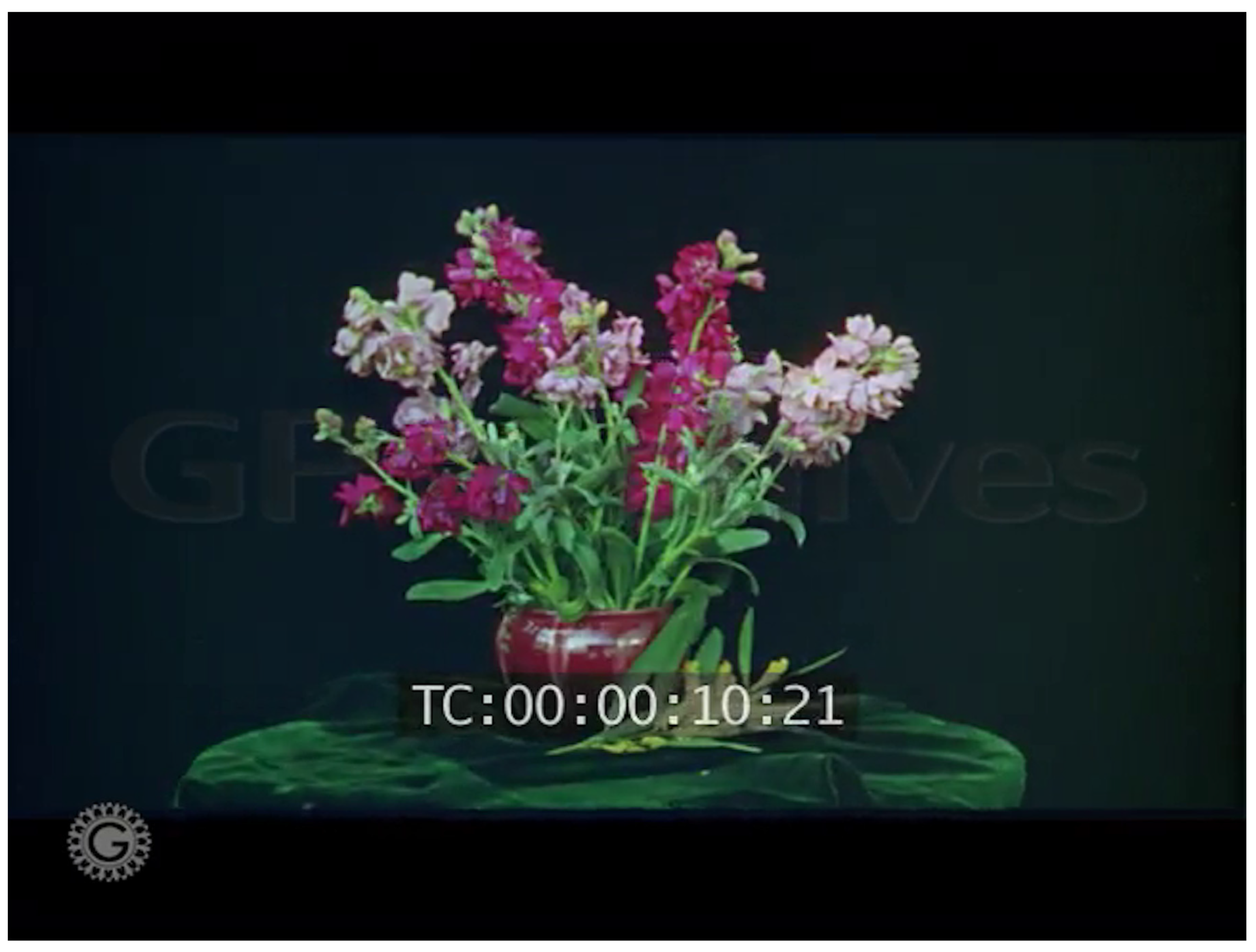
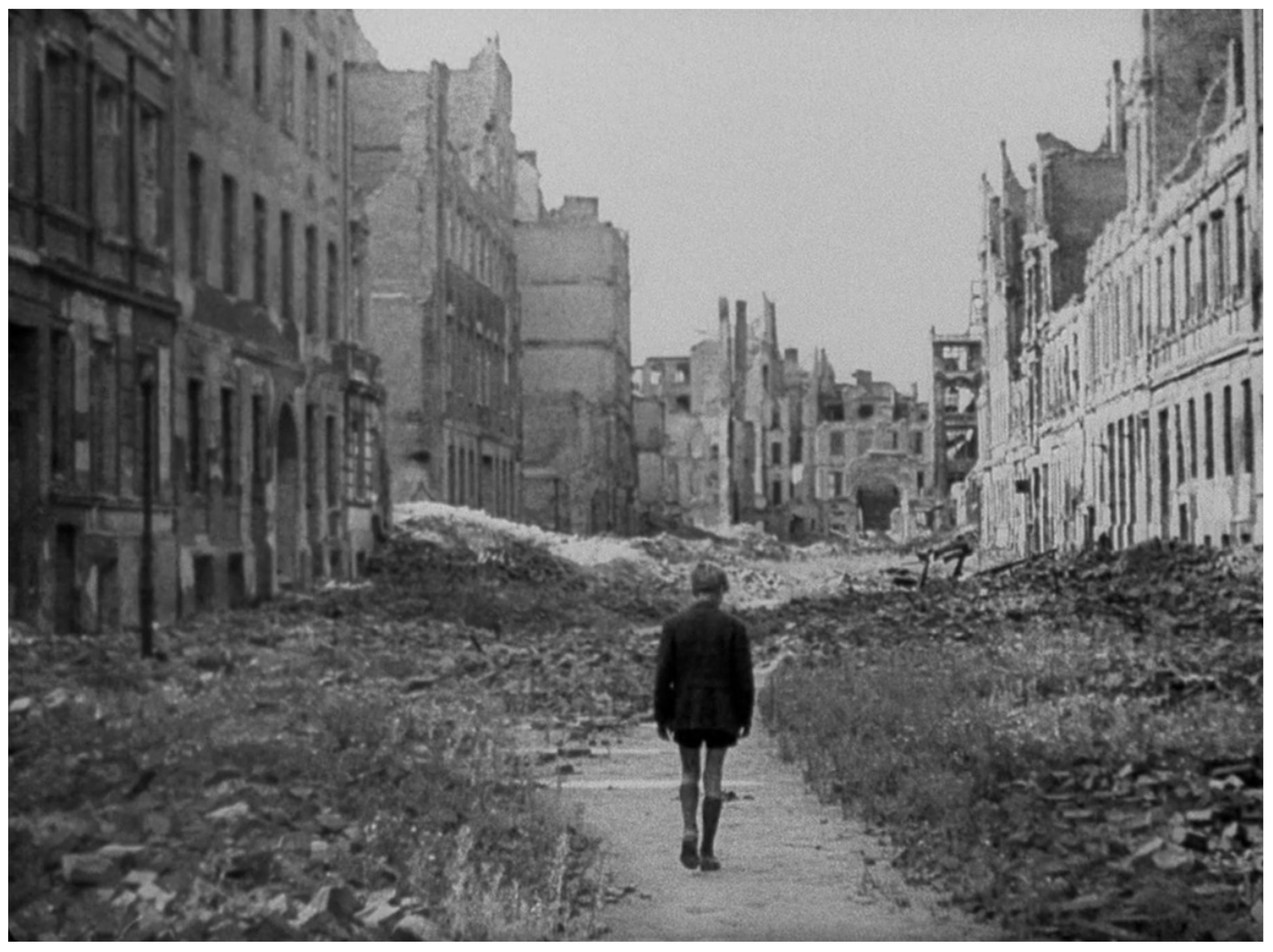
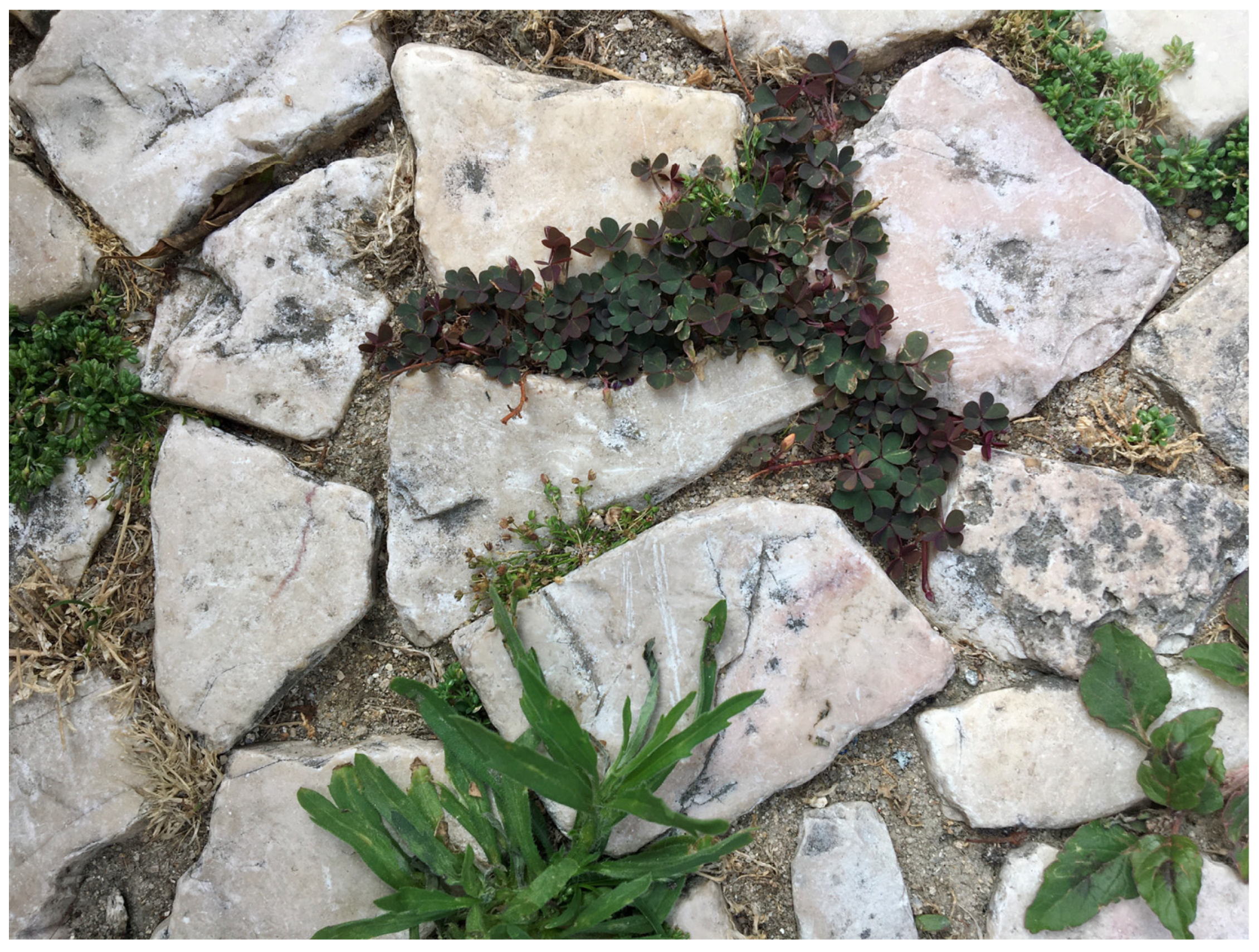
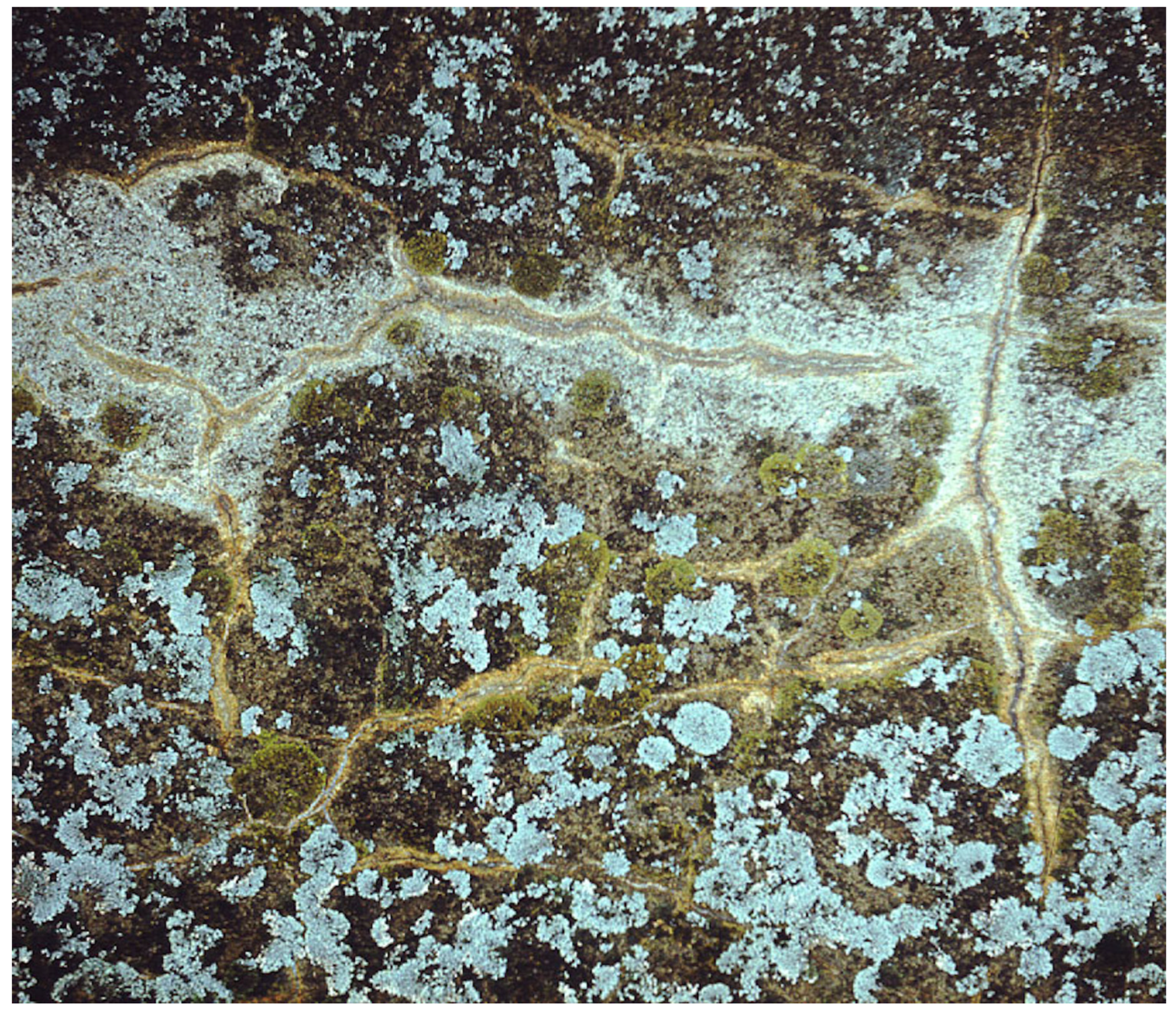
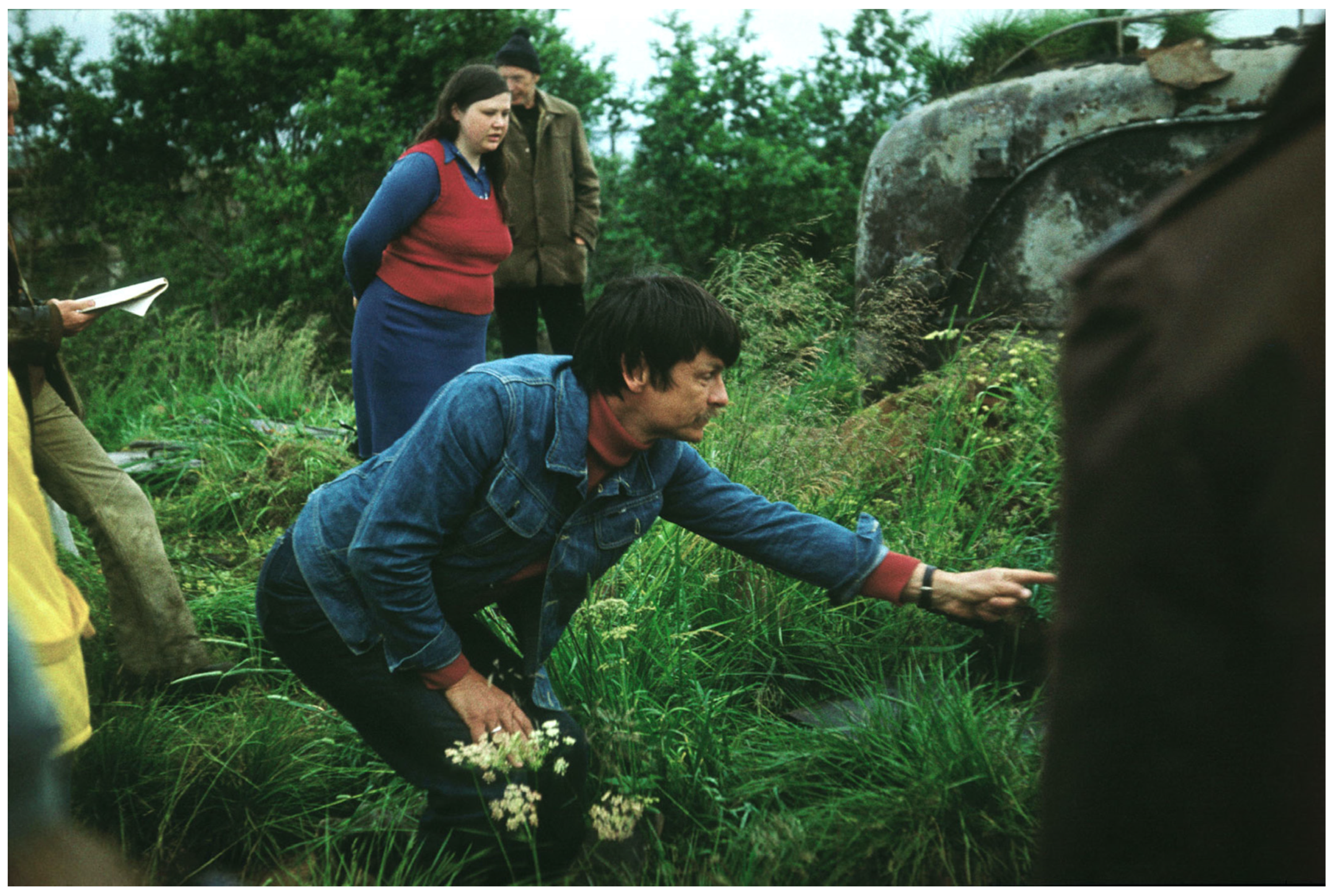
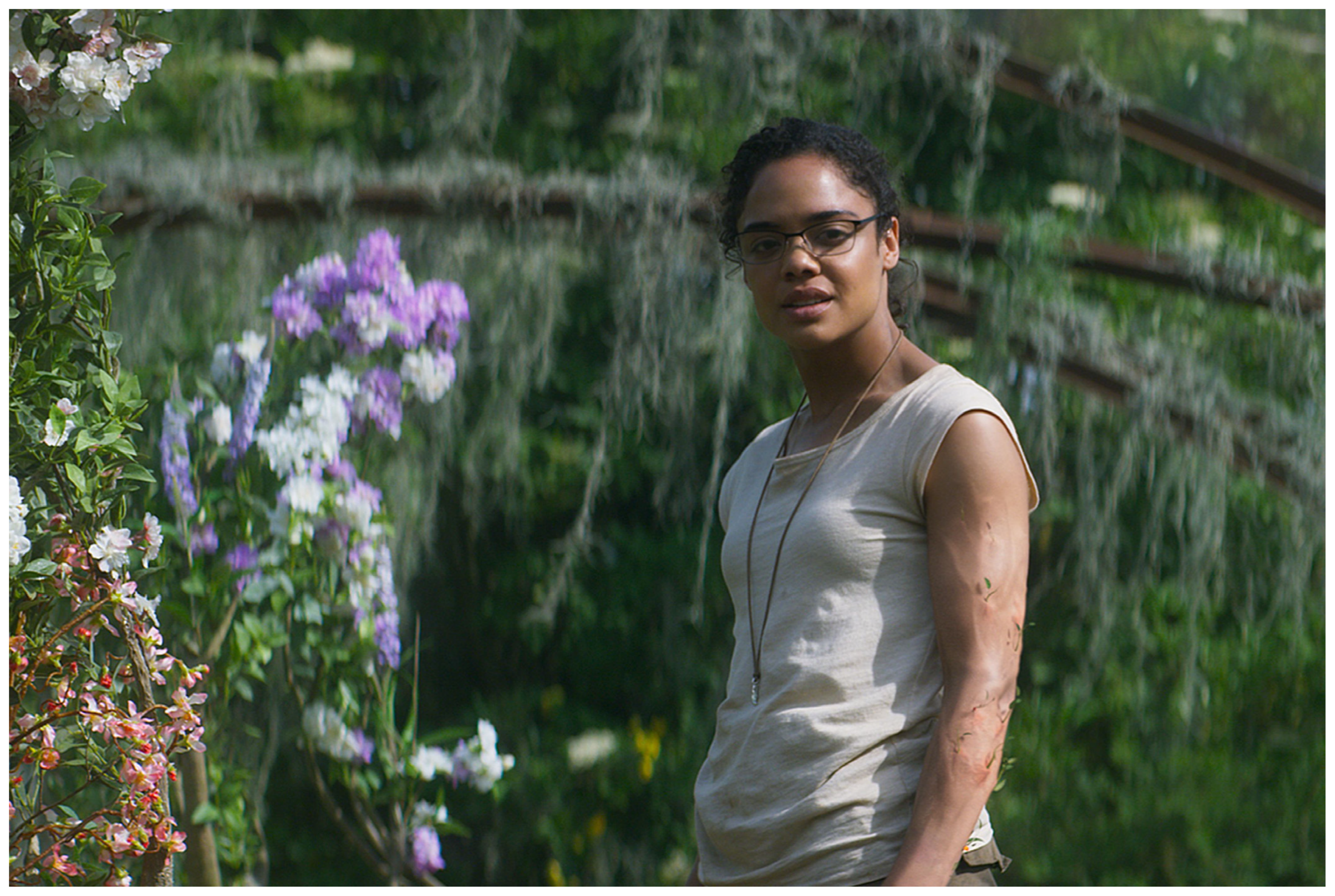


Disclaimer/Publisher’s Note: The statements, opinions and data contained in all publications are solely those of the individual author(s) and contributor(s) and not of MDPI and/or the editor(s). MDPI and/or the editor(s) disclaim responsibility for any injury to people or property resulting from any ideas, methods, instructions or products referred to in the content. |
© 2023 by the author. Licensee MDPI, Basel, Switzerland. This article is an open access article distributed under the terms and conditions of the Creative Commons Attribution (CC BY) license (https://creativecommons.org/licenses/by/4.0/).
Share and Cite
Castro, T. Common Grounds: Thinking With Ruderal Plants About Other (Filmic) Histories. Philosophies 2023, 8, 7. https://doi.org/10.3390/philosophies8010007
Castro T. Common Grounds: Thinking With Ruderal Plants About Other (Filmic) Histories. Philosophies. 2023; 8(1):7. https://doi.org/10.3390/philosophies8010007
Chicago/Turabian StyleCastro, Teresa. 2023. "Common Grounds: Thinking With Ruderal Plants About Other (Filmic) Histories" Philosophies 8, no. 1: 7. https://doi.org/10.3390/philosophies8010007
APA StyleCastro, T. (2023). Common Grounds: Thinking With Ruderal Plants About Other (Filmic) Histories. Philosophies, 8(1), 7. https://doi.org/10.3390/philosophies8010007




